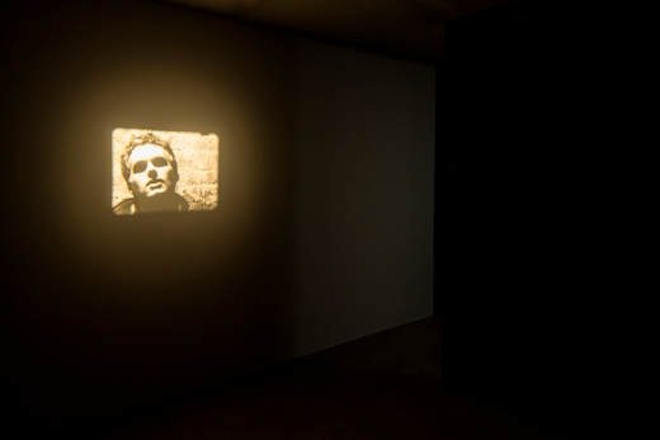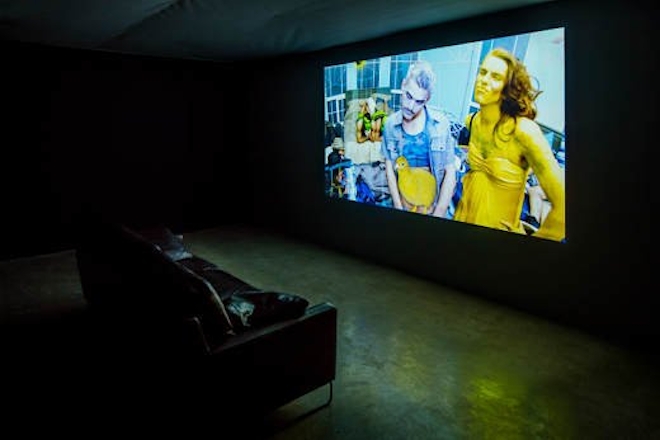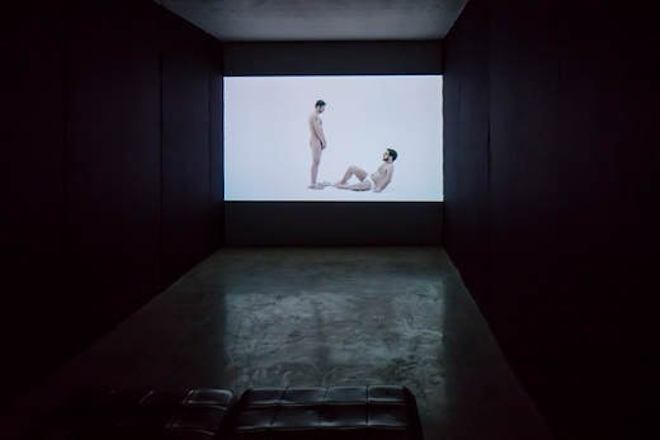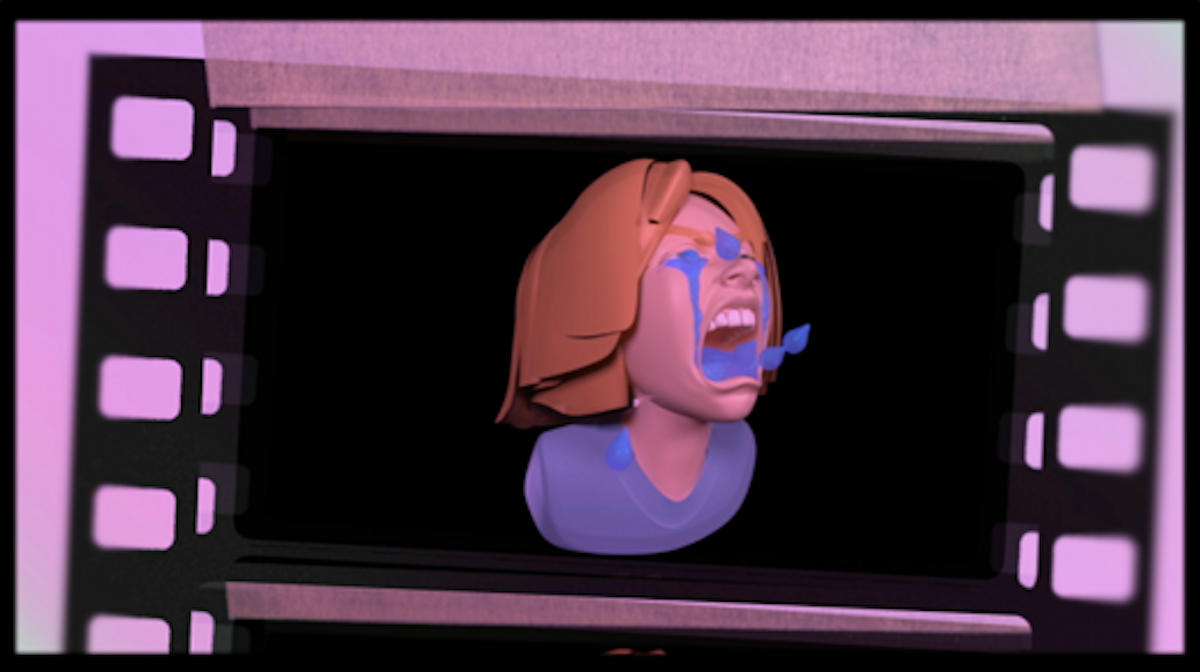The stairs leading up to Artspace were clogged. The mix of artists, curators, students, and writers formed a line leading from the closed gallery door to the entrance on Karangahape Road; such was the anticipation for The Shadow of the Dome of Pleasure, curated by Artspace assistant curator, Henry Davidson.
With the crowd beginning to stir, some voices could be heard reciting rumours from the previous week: “I heard they built a six-bedroom house”, “they can’t have finished in time, no way”. Auckland—like any other proverbial teacup of the artworld—is happiest when gossiping. Though the sobering nods of Artspace Volunteers lent an air of credence to the murmurs, there remained a sense of genuine anticipation for what lay beyond the closed door.
As the crowd clamoured in the Artspace stairwell for their first look inside the pleasure dome, one of the exhibitions’ promised "theatrical antecedents" sounded out from the Artspace attic above. Written by Evangeline Riddiford Graham and performed by Victoria Abbot, the poem Villanelle was recited in a pre-Exorcist (1973) state of possession. The layered anachronisms of Romans, pinafores, and trap-door attics introduced a set of exoteric references and poetic musings inline with Coleridge – from whose poem Kubla-Khan (1797) the exhibition title is taken. Villanelle imparted a vision of life beneath the dome, as described by Davidson in the exhibition text:
Works in this exhibition are sexually loaded, hysterical and existentially anguished, producing, en masse and in harmony with their setting, an immersive and exhausting world.
Escaping the lyrical hysteria that continued to descend onto the staircase, the crowd began filing into the Gallery’s shadowy entrance. In the first instance we were confronted not by Artspace’s usual white cube aesthetic, but a small, shadowy box space that placed the large opening night crowd into unexpected proximity.
The darkness was punctuated by the beam from a 16mm projector, which reeled Andy Warhol’s Blow Job (1964). A seminal work of its era and a milestone in the conceptual practice of film, Blow Job’s camera focuses not on the titular act, but the face of Factory inhabitant DeVeren Bookwalter. Immersed in an unseen pleasure—or at least giving a good impression of it (we’ll never know)—De Veren’s blond-tipped head slides back-and-forth for thirty-five minutes, a relaxed pleasure coating his lips.

Installation view of Blow Job (1964) Andy Warhol, 16mm film print, 35:00, courtesy Museum of Modern Art, New York and the Andy Warhol Foundation, Pittsburgh. Supported by Tony Kerridge. Photograph by Sam Hartnett
The crowd stalled, re-orientating themselves in the dark congested setting. Someone behind me whispered “sex dungeon”, and the thought of an unannounced orgy caused me to shiver with Warholian fear. The Artist was privately tortured about his sexuality, preferring to watch, to observe rather than partake in the act itself. In spite of its scintillating title, Blow Job is an enigma, a motion study devoid of sexual content.
Karangahape Road is filled with shadowy boxes; secret sites containing sexual acts, both vocational and recreational. Opened as the neighbouring strip club Las Vegas closed its doors, the new Artspace show is a timely reminder of the Road’s midnight exploits. Back-to-back in the Dome’s shadowy interior, the audience was recast as a mass of anonymous pleasure seekers.
The exhibition continued as a series of stages linked through a labyrinth of corridors; a black maze. This architectural revision—which did indeed equate to building a six-bedroom house—was collaboratively designed and built by Artists Biljana Popovic and Alexander Laurie. Struck by the transformative architecture, I momentarily forgot that The Shadow of the Dome of Pleasure was ostensibly about the moving image. The new cavernous interiors of Artspace disorientated. Absent of the Gallery’s fluorescent coating, the dome unfixed the audiences usual bearings.
In the next room, an HD projector lights up another of the structures’ theatrical walls with Item Falls (2013) by Ryan Trecartin. The piece is a hybrid of infomercial, reality, and music video formats, all painstakingly pieced together by Trecartin to resemble a case study in attention deficit. Whilst one of Warhol’s innovations was to sustain duration, Trecartin’s has been to minimise it, to imply a schizophrenic character within the moving image.

Installation view of Item Falls (2013) Ryan Trecartin, HD video, 25:45 courtesy the artist; Regan Projects, Los Angeles; Andrea Rosen Gallery, New York
A posse of gallery goers were draped on the ottoman cackling with an intensity that rivalled Trecartin’s own hard-worked glamour. The Artist had tapped into a zeitgeist capable of turning pleasant cultural-workers into a pack of hyenas.
Comparisons to Warhol abound, as Trecartin enacts his own kind of Factory, a space of unfettered, incessantly documented layabouts. Though there is a distinctly West-Coast vein to Item Falls: the exaggerated temperaments of Hollywood, the bleached interior of a dessert mansion, and the televising of "reality." Trecartin provides the unhinged extreme of Davidson’s curatorial vision, its cast of characters are “hysterical and existentially anguished” to the point of complete dysfunction—“animated horses can step on my heart just like the real horses.”
Departing with Trecartin’s final dedication to a cat called Percy, I followed the next tunnel to a red-lit space bearing cave-wall scrawls and another HD projection. Here—Level Three beneath the Dome of Pleasure—resided Juliet Carpenter’s Ingénue (2015), a medley of pubescent sexuality and poetic prose straight from the Victorian salon.
Taking her cue from the unfettered methodologies of Trecartin and the associated school of post-internet aesthetics, Carpenter’s filmic landscape luxuriates in competing styles. The instagram-infused cutaways vie with monotonous dash-cam footage, and all roads lead to the film’s ingénue, who delivers an earth-shattering monologue of sexual awakening.
The video’s central subject is a young woman straight from the films of Harmony Korine, spliced with a poetic euphoria. The video gains pace as the woman’s poetic prose lifts with recurrent mention of her “flaking clavicle.” Gesticulating with sexual intent, the young woman offers a provocative promise:
“I’ll show you want it means to be made of something thicker than flesh”
While I tugged at my collar uncomfortably, those around me seemed unperturbed. Expressions of teenage sexuality have become pedestrian.
Dizzied by the onslaught of Warhol, Trecartin, and Carpenter, I emerged through another of the labyrinth’s black holes to find Akram Zaatari’s The End of Time (2012); a momentary break in the filmic bliss beneath the Dome.

Installation view of The End of Time (2013) Akram Zaatari, HD video, 14:26, courtesy the artist and Thomas Dane Gallery, London.
The End of Time portrays a power play between three shabby looking men, set amongst the kind of glistening white environment made famous by feature film THX-1138 (1971). While George Lucas populated his reductive set-design with haunting figures of masculine persecution, Zaatari’s "choreography of desire" felt limp and manufactured. The video’s sole redeemer was the strange repetitive act of pointing to genitals, always done with a kind of paranormal stupor. I waited my turn to listen to Zaatari’s headset, and upon hearing the ambient drones of what sounded like a B-side from Radiohead's Kid A, I cut my losses.
Onto the next miniature theatre, and the momentary lapse of Zaatari was easily forgotten. Stamped with the veneer of a bookish conceptualism, Agnieszka Polska’s Future Days (2013) depicts a group of deceased artists wandering aimlessly through a heavenly dream zone. The landscape becomes a fictive space where their respective careers overlap, a transitory site where poetic reverie and intellectual musing are deposited. Each artist is represented in a kind of existential crisis, the gaunt expressions of their latex masks reminiscent of the stunned inaction of Thunderbird puppets. At one point in Future Days, Bas Jan Ader washes up on the shoreline, his distinctive double-denim coated in panicles. Presumably, the Dutch Artist arrives on the heavenly plain as a consequence of his immortalising performance, In Search of the Miraculous (1975). This is art history through the idiosyncratic, lucid space of poetics and Future Days carves a sly path to another time.
Slumped over in the pleasant company of Future Days, the dome felt complex, and unhinged from any clear didactic. Referring to the pamphlet left folded in my pocket, I was inclined to agree that the exhibition functioned “somewhere between a stage and a green room; a labyrinth and a sensorium.” The final screen belonged to Jesse Darling, who thankfully interrupted two hours of accumulated viewing with a thirty-two second loop, a welcome release as my attention span waned beneath the dome. Darling delivered apocalyptic visions from a tanning bed, imparting a Coleridge-infused poetics shared by Graham and Carpenter.
Near its end, life beneath the Dome took on an introspective pleasure. Warhol and Carpenter’s sexual conceits felt lulled by Polska’s sleepy landscape, and the screeches from Trecartin were now just a muffled sound in the distance. Searching for the exit, I saw a final corridor leading to a white, natural light—unwelcome stuff beneath the shadowy Dome. The passage opened into an unexpected amphitheatre, a daylight-holding zone conceived by Biljana Popovic and Alexander Laurie.
The room where calm and light preside was reminiscent of the ethereal cutaways of The Matrix (1999). Here, survivors of the Dome of Pleasure are asked whether to swallow the red pill, or the blue pill, to choose whether they will return to the dark labyrinth, or stay absorbed in the light. The final architecture is a cerebral centre that collects together the surrounding cinemas, “a clearing house for the accumulative effects of witnessing The Shadow of the Dome of Pleasure”.
The roof of Artspace glows above, the sole reminder of the institution left behind.
